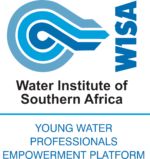Niel Louw
WISA Young Water professionals
“Kids nowadays are constantly glued their phones or computers”
Younger people have always adopted new technologies easier and earlier than older generations at any given point in time. According to a 2019 Pew Research study there is a clear correlation between age and adoption of technologies, especially digital technologies, such as Smartphones or the Internet where 93% of Millennials (aged 24 to 39 in 2020) own Smartphones while a 100% use the internet, compared to 90% and 91% adoption rates for Gen X, and 68% and 85% for Boomers.
Experts put this willingness to embrace new technologies down to the ease of incrementalism as each new advance in computing, the current driver of new digital technologies, is just a small step forward every time for those young enough to have been born in age of the computer and therefore always seems logical and more easily digestible.
Furthermore, young people also trust in the positive benefits of technology as evidenced by 2019 UK survey which shows that two in five children, as young as 9 years old, believe that technology could and should be used to make a difference in people’s lives, with 61% recognising the power of technology to help them learn new skills and 37% believing that power should be harnessed to help other people.
It is with these statistics in mind that we have to look to the youth, not only as early adopters and innovators of technology, but also because of their willingness to use technology for the benefit of themselves and others, to utilise technology in order to positively contribute to the success of South Africa in general, and the national water sector specifically.
Already the benefit of technology is apparent in its ability to now, for the first time, realise a fully virtual WISA conference in 2020 – the virtual nature therefore perhaps being necessitated by the current pandemic, but ultimately allowed by the current state of technology.
Furthermore, digital technology is also able to positively contribute to multiple other facets of the water sector. For instance, it is self-evident that an efficient water sector requires a skilled and capacitated workforce where the demand for certain skills is appropriately matched by the supply. The development and wide-spread adoption of E-Learning platforms is able to provide world-class learning and upskilling opportunities at cost effective rates to millions of learners and water sector employees across the country while the development of integrated databases can provide efficient skills matching services between the needs of water sector employers and the graduate output of institutions of learning within the country.
Another example of the potential benefit of digital technologies is the wide-spread adoption of smart water meters and other smart devices and their integration within the a water supply chain Internet of Things (IoT) – a network of multiple devices connected and constantly exchanging data over the internet . Such a digital integration of the water supply chain has the potential to provide more nuanced, granular and in-depth data about the state of national or local water supply and demand at any given time.
Ideally the systematic integration digital technology into the various facets of the South African water sector would ultimately serve as the foundational building blocks for a comprehensive, fully integrated and automated national Water Security monitoring system. This system would incorporate thousands of weighted water security indicators – from the obvious such as dam levels, to the obscure such as an increase in the price of copper likely leading to increased copper theft and therefore an equally likely decrease the surety of water supply – which would be monitored and compared in real-time to give a snapshot of national water security at any point in time. Computer learning algorithms will also be able, after a few years and billions of calculations of millions of data points, to accurately predict national water security in the short-, medium- and long-term based on these leading indicators and identify problem areas that require intervention.
A few years ago, such a system would have seemed like mere Science Fiction to most people, but today, due to the digital technology revolution, it is a reality that is already evident in many industries and sectors across the world – from digital services like Google to the integrated logistics that make online delivery companies like Takealot so efficient and successful.
However, such systems can only be truly realised in the national water sector by those who fully embrace the advancement of digital technologies and who are allowed to innovate and apply these technologies with the support of policy and decision makers alike. It is the youth in the water sector who are most capable, by virtue of their experience and comfort within the digital revolution age, to drive such innovation which is why the youth needs the support to flourish and innovate and have their ideas of technological integration be heard by those who have the power to promote and implement them.
In the end, perhaps it will be the kids who were constantly glued to their phone and computers that might just prove to be the lifeline that the South African water sector needs in the near future.
